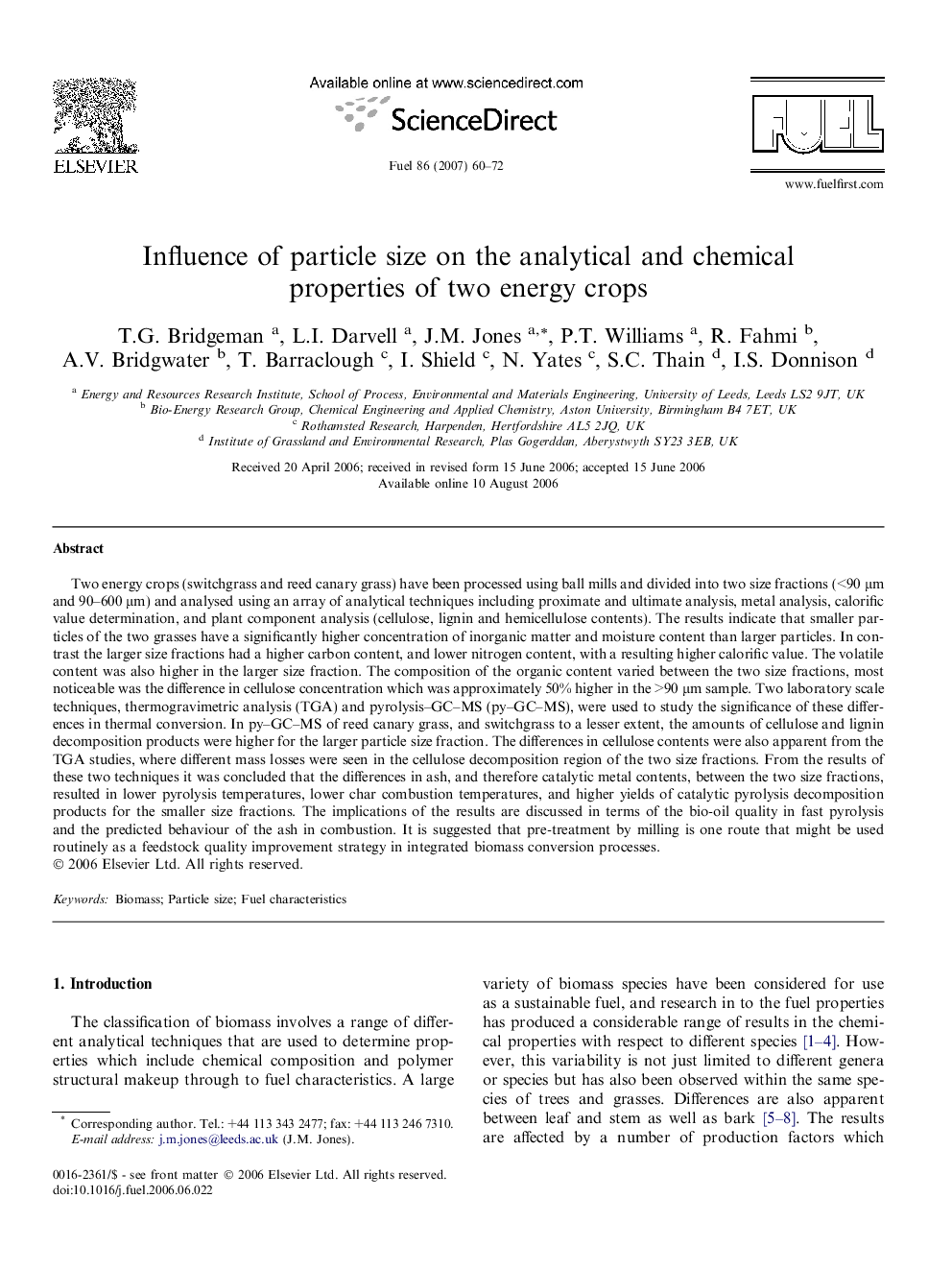| کد مقاله | کد نشریه | سال انتشار | مقاله انگلیسی | نسخه تمام متن |
|---|---|---|---|---|
| 208271 | 461245 | 2007 | 13 صفحه PDF | دانلود رایگان |

Two energy crops (switchgrass and reed canary grass) have been processed using ball mills and divided into two size fractions (<90 μm and 90–600 μm) and analysed using an array of analytical techniques including proximate and ultimate analysis, metal analysis, calorific value determination, and plant component analysis (cellulose, lignin and hemicellulose contents). The results indicate that smaller particles of the two grasses have a significantly higher concentration of inorganic matter and moisture content than larger particles. In contrast the larger size fractions had a higher carbon content, and lower nitrogen content, with a resulting higher calorific value. The volatile content was also higher in the larger size fraction. The composition of the organic content varied between the two size fractions, most noticeable was the difference in cellulose concentration which was approximately 50% higher in the >90 μm sample. Two laboratory scale techniques, thermogravimetric analysis (TGA) and pyrolysis–GC–MS (py–GC–MS), were used to study the significance of these differences in thermal conversion. In py–GC–MS of reed canary grass, and switchgrass to a lesser extent, the amounts of cellulose and lignin decomposition products were higher for the larger particle size fraction. The differences in cellulose contents were also apparent from the TGA studies, where different mass losses were seen in the cellulose decomposition region of the two size fractions. From the results of these two techniques it was concluded that the differences in ash, and therefore catalytic metal contents, between the two size fractions, resulted in lower pyrolysis temperatures, lower char combustion temperatures, and higher yields of catalytic pyrolysis decomposition products for the smaller size fractions. The implications of the results are discussed in terms of the bio-oil quality in fast pyrolysis and the predicted behaviour of the ash in combustion. It is suggested that pre-treatment by milling is one route that might be used routinely as a feedstock quality improvement strategy in integrated biomass conversion processes.
Journal: Fuel - Volume 86, Issues 1–2, January 2007, Pages 60–72